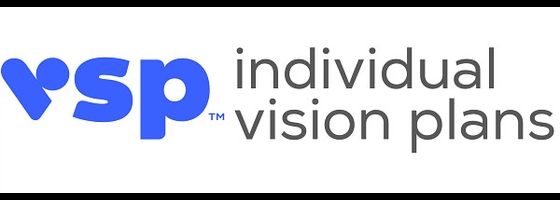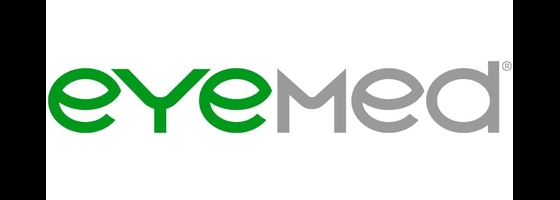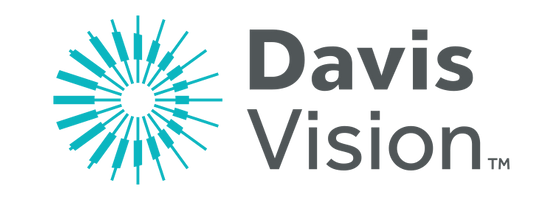- EasyOptions plan offers flexibility and customization at doctor’s office.
- VSP Individual Vision Plans give you access to an additional $3,000 in member-only savings
Our evaluations and opinions are not influenced by our advertising relationships, but we may earn a commission from our partners’ links. This content is created independently from TIME’s editorial staff. Learn more about it.
Approximately three-quarters of U.S. adults use some form of vision correction. This means hundreds of millions of Americans rely on corrective lenses to sharpen their eyesight and live a fulfilling life. Because glasses and contact lenses are typically not covered by standard health insurance, many of those Americans buy a supplemental vision insurance plan. We got personalized quotes from six of the country’s leading vision insurance plans. Let’s see how they compare.
Compare the best vision insurance companies
| Company | Best for | Plan name | Monthly cost | Exam copay | Lens copay | Frame allowance |
|---|---|---|---|---|---|---|
Flexibility | Standard | $12.73 | $15 | $25 | $150 | |
Anthem Blue View Vision | Plan options | Value | $12.26 | $20 | $20 | $130 |
Davis Vision | LASIK discount | Essential | $13.41 | $15 | $25 | $125 |
EyeMed | Budget | Healthy | $5.00 | $0 | $55 | 35% off retail price |
Humana | Overall value | Vision Plus | $13.99 | $10 | $10 | $200 |
UnitedHealthcare | Contact lenses | Plan A | $10.40 | $10 | $10 | $150 |
Our reviews of the best vision insurance companies
Best for plan flexibility: VSP® Individual Vision Plans

VSP® Individual Vision Plans
VSP® Individual Vision Plans
The Standard plan through VSP Individual Vision Plans offers a $15 exam copay and $25 lens copay. It also has a $150 frame or contacts allowance, placing it around the middle of the companies we’ve reviewed.
If you have more expensive taste in frames or needs such as progressive lenses, you might upgrade to the EasyOptions plan. It’s a customizable plan that gives you the ability to choose a higher frame allowance or get full coverage for lens enhancements, such as progressive lenses or tinting, while in the doctor’s office so you can pick the option that will save you the most. Just be aware that this flexibility comes at a price, as the EasyOptions plan costs nearly double the premium of the Standard plan. A VSP policy includes access to additional savings, including up to $1,200 off of LASIK.
VSP Individual Vision Plans came in sixth out of six companies reviewed in the J.D. Power 2023 U.S. Vision Plan Satisfaction Study with 763 points.
Pros:
Cons:
- Lowest-ranked company by J.D. Power.
- EasyOptions plan is almost double the cost of the Standard plan.
Best for plan options: Anthem Blue View Vision

Anthem Blue View Vision
Anthem Blue View Vision
The Anthem Blue View Vision Value plan includes $20 copays for exams and lenses and a $130 allowance for frames. This is among the least generous plans in our review.
However, what sets the company apart is its sheer number of plan options. Our quote included pricing for eight different plans ranging from the $12.26-per-month Value plan to the $22.52-per-month Ultra plan. If you want a lot of plan options, Anthem Blue View might be worth checking out. Furthermore, the company offers an $800 discount on LASIK procedures.
Anthem Blue View Vision was not included in the J.D. Power 2023 U.S. Vision Plan Satisfaction Study.
Pros:
- Multiple plan choices.
- Frame allowance increases to $200 with upgraded plans.
Cons:
- Available only in 14 states.
Best for budgets: EyeMed

EyeMed
EyeMed
If you’re on a particularly tight budget, check out EyeMed. We were quoted the company’s Healthy plan for just $5 per month. This provides a $0 exam copay, a $55 charge for lenses (rather than a lens copay), and frames at 35% off the retail price (rather than a frame allowance). So while you might have a bit more to pay out of pocket than with some other plans, you could save a lot on premium costs, depending on your needs.
EyeMed offers two upgraded plans with lens allowances up to $200. All plans include a 15% discount on LASIK procedures.
EyeMed ranked fourth out of the six companies reviewed in the J.D. Power 2023 U.S. Vision Plan Satisfaction Study, with 767 points.
Pros:
- Lowest cost provider in our review.
- Upgraded plans available.
Cons:
- Below-average rating by J.D. Power.
- Healthy Vision plan provides minimal out-of-network benefits.
Best for LASIK discount: Davis Vision

Davis Vision
Davis Vision
Davis Vision (formerly Superior Vision before the company was purchased by MetLife) offers a $15 exam copay, a $25 lens copay, and a $125 frame allowance. Considering the quoted cost, it’s one of the lower-value plans in our review.
Still, Davis Vision might be a good choice if you’re hoping to ditch those glasses or contacts altogether. LASIK corrective surgery is typically not covered by vision plans, but many insurers offer LASIK discounts, often from specific surgery providers. Davis Vision offers the highest discount in our review—up to 50% off the procedure. Considering that LASIK can cost as much as $3,500 per eye, such a discount could result in thousands of dollars of savings.
Davis Vision earned 766 points and ranked fifth out of six companies in the J.D. Power 2023 U.S. Vision Plan Satisfaction Study.
Pros:
- LASIK discount could help save thousands of dollars.
- It has 135,000 providers—the most in our review.
Cons:
- J.D. Power ranking is below the national average.
Best for overall value: Humana

Humana
Humana
Humana is the most expensive company in our review. However, the company’s Vision Plus plan appears to offer a significant amount of bang for the buck. Our quote included exam and lens copays of just $10 and a generous $200 frame allowance. Opting for one of the company’s PLUS network providers amplifies this value, dropping the copays to $0 and increasing the frame allowance to $250. Humana also offers up to 15% off of LASIK surgery from providers in its network.
Humana was not included in the J.D. Power 2023 U.S. Vision Plan Satisfaction Study.
Pros:
- $0 copays if opting for one of the company’s PLUS providers.
- $200 frame allowance.
Cons:
- Most expensive plan in our review.
Best for contact lenses: UnitedHealthcare

UnitedHealthcare
UnitedHealthcare
Prefer contacts over glasses? Consider UnitedHealthcare. Its Plan A provides an option for glasses or contacts. Choose contacts and you’ll have a $10 exam copay with a $0 copay for select contact lens makes/models when you use an in-network provider.
The company’s upgraded Plan B allows covers both glasses and contacts while offering the same copay with a $150 frame allowance. UnitedHealthcare does not appear to publish a network size but does note on its website that it has a “large national network.” It also has a generous 35% discount for LASIK surgery through QualSight LASIK.
UnitedHealthcare earned 817 points in the J.D. Power 2023 U.S. Vision Plan Satisfaction Study, placing it second out of six studied companies.
Pros:
- Get contact lenses for just $10.
- Highly rated by J.D. Power.
Cons:
- Limited upgrade options.
Methodology
Our goal is to offer a high-level overview of leading vision insurance providers to help readers make a more informed choice when considering the purchase of a plan. We got quotes from six of the leading vision insurance providers in the U.S. Each was for a 35-year-old nonsmoker residing in Indianapolis.For a fair comparison of cost and benefits, our table includes data for the cheapest plan from each company. Company reviews, however, may highlight details from more expensive plan options.
Company websites were our primary source of information about these providers. We also looked at the J.D. Power 2023 U.S. Vision Plan Satisfaction Study.
How to select the best vision insurance company
When shopping for vision insurance, follow these tips.
Consider your needs
Nobody can predict the future with certainty, but you should put some thought into your probable vision needs for the coming year. The question to ask: Will the cost of coverage be greater than what I expect to pay?
If you have excellent eyesight and don’t think you’ll need glasses in the near future, you may be able to skip buying vision insurance altogether. On the other hand, if your vision is getting blurrier, and you think you’ll need new glasses or contacts, buying coverage may make sense.
See what’s available with your primary health insurance company
While your health insurance plan probably does not cover vision, it may offer coverage as an option. You’ll want to consider this as you evaluate vision insurance providers.
Keep in mind that the Affordable Care Act requires qualified health insurance plans to include vision coverage for those under age 19.
Get quotes from multiple providers
As we’ve seen in this review, coverage costs vary among insurance companies. Check with at least three or four to make sure you’re getting the coverage you need at the lowest possible price.
Explore options that might suit your needs
Our review also shows that plan details vary. Some, for instance, offer more generous coverage for contacts or discounts for LASIK. You’ll want to choose plan options that suit your needs.
Consider provider networks
Finally, most plans offer higher levels of coverage for in-network services. In other words, you’ll pay less if you go to specific providers (such as ophthalmologists and optometrists) affiliated with the insurer. You should make sure you’re comfortable using the providers in your insurer’s network.
What to know about vision insurance
Just over three-quarters of Americans use some form of vision correction. Unfortunately, health insurance rarely covers the cost of common vision needs, including eye exams, eyeglass lenses and frames, contact lens fittings, and contact lenses. Vision insurance fills that coverage gap.
How to get vision insurance
Vision insurance is easy to buy. If you have health insurance—either a group plan or an individual policy—see if your insurer provides the coverage. It may offer either a coverage “rider” (optional coverage added to your primary health insurance policy or dental policy), a separate vision policy, or coverage through a partnership with a company that specializes in vision insurance. If not, you can go online to get quotes and review plan options, then buy a policy in just a few minutes.
What does vision insurance cover?
While vision insurance plans vary among providers, you can expect the following to be covered:
- Routine eye exams.
- Eyeglass lenses.
- Eyeglass frames.
- Contact lens fittings.
- Contact lenses.
How vision insurance works
When you buy a vision insurance policy, you pay the insurance company a premium. The premium may be deducted from your paycheck if the insurance is through your employer.
The policy provides certain benefits, such as low-cost vision exams, eyeglasses, and/or contacts. Typically, your insurance company will pay the majority of the cost, leaving you to pay a small copay to the service provider. To get the lowest possible cost for these items, you may need to use providers (such as ophthalmologists and optometrists) that are in your insurer’s network.
When you receive a service, the provider will verify your coverage, bill the insurer, and expect payment of any copay. For example, if an eye exam costs $125, and your vision insurance has a $10 copay, you’ll pay just $10 to the ophthalmologist. The insurer will pay the remaining $115.
Eyeglass frames are usually subject to an allowance. This is the most your insurer will pay toward a pair of frames. For example, if your vision insurance has a $150 frame allowance, and you pick out a $225 pair of frames, you’ll pay $75 for the frames, and the insurer will pay the remaining $150.
What does vision insurance not cover?
Again, each plan is different, but typically a vision insurance plan will not provide coverage for the following:
- Eye surgery and treatment for conditions such as glaucoma and cataracts. These costs may be covered by your primary health insurance.
- Specialized lenses. These include anti-glare or scratch resistant lenses. Some coverage may be available with upgraded plans.
- Optional procedures. LASIK surgery is a primary example. Many insurers, however, offer LASIK discounts.
How much does vision insurance cost?
Vision insurance is relatively affordable. The six companies in our review offer plans ranging from $5 to $13.99 per month for an individual.
Vision insurance is optional, so you owe it to yourself to consider whether you really need it. If you have excellent eyesight or don’t expect to need new glasses in the coming year, it might make sense to forego the coverage.
How to save on vision insurance
As with any type of insurance, you have many choices when it comes to vision coverage. Shop around to make sure you get a plan that meets your needs at a price that works for your budget. Examine plan options carefully to make sure you’re not buying more coverage than you need.
Once you have a plan, try to get your exams and glasses or contacts from providers in your insurer’s network. This is typically the cheapest way to get eye care. Most vision insurers have “find a network provider near you” search tools on their sites.
TIME Stamp: Vision insurance is not covered by standard healthcare, but there are many supplemental coverages
If you’re among the relatively few people who don't need corrective lenses, you can probably forego vision insurance. For the rest of us, vision insurance helps keep glasses, contacts, and eye exams affordable. There are many providers from which to choose, and most offer multiple plan options. Review those options carefully and consider your needs when you’re shopping for coverage.
Frequently asked questions (FAQs)
Which vision insurance does Wal-Mart vision take?
Wal-Mart accepts a variety of vision insurance providers and is also an out-of-network provider for companies such as VSP, EyeMed, and Davis Vision. Using an out-of-network provider means you may be able to get a partial reimbursement of your costs.
Who takes VSP vision insurance?
VSP’s network includes 36,000 providers across the country. The company website includes a “Find a Doctor” feature that allows you to search for a provider by ZIP code or street address.
What is the largest vision insurance company?
VSP claims to be the country’s largest provider of vision insurance, with more than 80 million members worldwide.
The information presented here is created independently from the TIME editorial staff. To learn more, see our About page.

